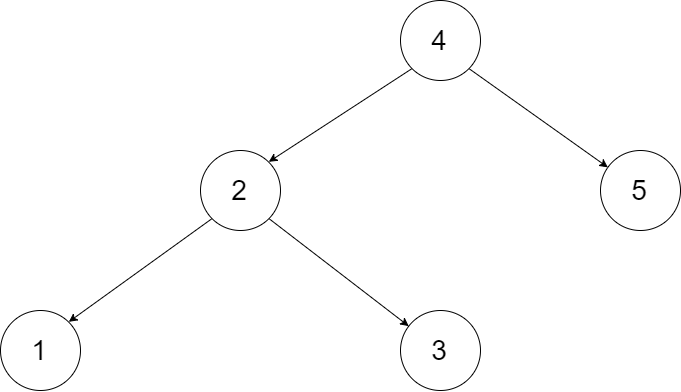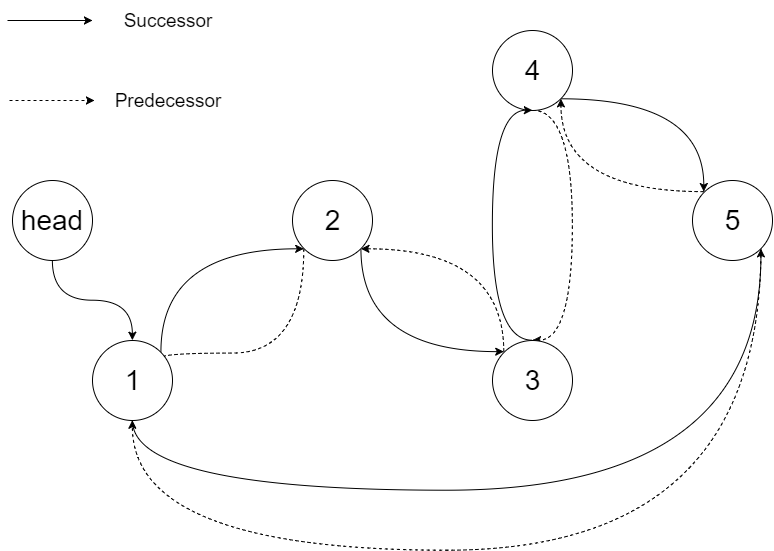Convert a Binary Search Tree to a sorted Circular Doubly-Linked List in place.
You can think of the left and right pointers as synonymous to the predecessor and successor pointers in a doubly-linked list. For a circular doubly linked list, the predecessor of the first element is the last element, and the successor of the last element is the first element.
We want to do the transformation in place. After the transformation, the left pointer of the tree node should point to its predecessor, and the right pointer should point to its successor. You should return the pointer to the smallest element of the linked list.
Example 1:

Input: root = [4,2,5,1,3]

Output: [1,2,3,4,5] Explanation: The figure below shows the transformed BST. The solid line indicates the successor relationship, while the dashed line means the predecessor relationship.

Example 2:
Input: root = [2,1,3] Output: [1,2,3]
Example 3:
Input: root = [] Output: [] Explanation: Input is an empty tree. Output is also an empty Linked List.
Example 4:
Input: root = [1] Output: [1]
Constraints:
-1000 <= Node.val <= 1000Node.left.val < Node.val < Node.right.val- All values of
Node.valare unique. 0 <= Number of Nodes <= 2000
将二叉搜索树转化为排序的双向链表。
题意是将一个二叉搜索树就地转化为一个已排序的双向循环链表,要求是不能使用额外空间。那么思路就只能是递归的中序遍历。首先我们创建两个dummy节点,一个代表图示中的head节点,一个用来记录中序遍历中的前一个节点prev。在helper函数中,因为中序遍历的结果是有序的,所以当我们遍历到当前节点的时候,需要
- prev.right = cur,把前一个节点的右指针指向当前节点
- cur.left = prev,把当前节点的左指针指向prev节点
- prev = root,把root记录到prev
我们跑完整个树之后,记得把prev.next指向head,把head.left指向prev
时间O(n)
空间O(n) - 只用了递归的栈空间
Java实现
1 /* 2 // Definition for a Node. 3 class Node { 4 public int val; 5 public Node left; 6 public Node right; 7 8 public Node() {} 9 10 public Node(int _val) { 11 val = _val; 12 } 13 14 public Node(int _val,Node _left,Node _right) { 15 val = _val; 16 left = _left; 17 right = _right; 18 } 19 }; 20 */ 21 22 class Solution { 23 private Node dummy; 24 private Node prev; 25 26 public Node treeToDoublyList(Node root) { 27 dummy = new Node(0, null, null); 28 prev = dummy; 29 // corner case 30 if (root == null) { 31 return null; 32 } 33 34 // normal case 35 helper(root); 36 prev.right = dummy.right; 37 dummy.right.left = prev; 38 return dummy.right; 39 } 40 41 private void helper(Node root) { 42 if (root == null) { 43 return; 44 } 45 helper(root.left); 46 prev.right = root; 47 root.left = prev; 48 prev = root; 49 helper(root.right); 50 } 51 }